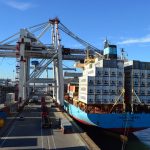CGD makes World Banks list
Portugal’s public bank Caixa Geral de Depósitos has made The Banker’s TOP 1000 World Banks list for the second year running — the only Portuguese bank to do so.
It made it to the list because of its size, robust capital position, with a Tier 1 capital ratio of 17.97% projected by 2025 with a starting point of 18.73% at the end of 2022.
CGD maintained its position of leadership in Portugal according to the magazine owned by the Financial Times.
Last year the bank led by Paulo Macedo joined the list at with a Capital Tier 1 of €8.1Bn, an increase of 6.5% on 2019.
CGD is also the largest bank in Portugal in terms of consolidated assets with a total balance of €Bn.
The Banker also points to the continued positive evolution in terms of profitability and reduction in credit default. (NPLs)
The bank’s net results in H1 of 2023 enabled CGD to wipe clean previous losses and deliver €1.2Bn in recapitalisation value with dividends of €713 million and a liquidation of Tier 2 issuance of €500 million in full settlement of private sector financing in the 2017 recapitalisation.
The bank’s consolidated net result for H1 of 2023 was €608 million, an impressive result since its restructuring and recapitalisation in 2017, enabling the bank to pay off accumulated debts built up over the financial years 2011 to 2016 as a result of the banking crisis in Portugal.
Average rentability of own capital (ROE) for the past decade increased from 0.9% in the pre-capitalisation period to 7.7% in 2022.
A dividend distribution of €352 million for 2022 was approved in General Meeting. This dividend was the highest ever and was accompanied by a distribution in kind for the amount of €361 million, subject to the authorisation of the European Central Bank, comprising the surrender of the ownership of its headquarters building to its sole shareholder — the Portuguese State, for the amount of €713 million, paid in 2023.
Early payment of the Tier 2 issuance for the amount of €500 million was made in June, in full settlement of private sector financing in the 2017 recapitalisation.
These operations as a whole represented Caixa’s payment of €1.2 billion of the amount of its 2017 recapitalisation in 2023, in its payment of €1,675 million of the €2.5 billion in public investment and representing 2/3 of the total.
The current cost-to-income ratio was down to 27.3%, on the back of high levels of efficiency and a higher level of income.
Customer deposits totalled €79 billion on a consolidated basis and €69 billion in terms of domestic activity in which Caixa retained its market lead of 23%, as was the case in the individual customers segment with a market share of 31%.
Caixa achieved a consolidated total of €53 billion in its loans and advances to customers, of which €45 billion in Portugal, stabilising in year-on-year terms. In domestic terms this volume represents a market share of 18% and preserves Caixa’s leading position, particularly in mortgage lending (23%).
The amount charged in commissions decreased by 5%, compared to the same period last year, with a continuation of the decline expected until the end of the year.
Caixa also consolidated its lead of the equipment leasing segment with a market share of 24%.
Consumer credit (new loans) was up 18.4% over the same period to €180 million. Providing customers with technologically advanced solutions developed under the 2021-2024 strategic plan, with remote contracting representing 53% of total operations, contributed to such a positive level of evolution.
In corporate terms reference should be made to the 52% growth of business on the Flexcash digital payment management platform and expressive increases in trade finance products.
The number of active digital banking customers was up 7% over the same period last year to 2.3 million (individual and corporate). The mobile channel recorded 16% growth to 1.6 million users and the proportion of sales on digital channels to individual customers in Portugal totalled 82%.
Caixa recorded an NPL ratio of 2.48% in first half 2023, with the NPL ratio net of impairment remaining at 0% (zero). The cost of credit risk, reflecting a conservative and predominantly preventative approach, stood at 0.40% Capital ratios comfortably exceeded regulatory requirements to CET 1 and total capital ratios of 19.3% and 19.6%, respectively, even after early repayment of the tier 2 issue.
The MREL ratio equalled the amount of own funds and eligible liabilities equivalent to 27.09% of total risk-weighted assets and exceeded the requirement of 26.44% applicable from the beginning of 2024.
Caixa’s performance merited the recognition of the rating agencies. DBRS upgraded its rating on Caixa to BBB (high) in May and Moody’s upgraded its BCA (baseline credit assessment) rating to baa2 — the same level as for the Portuguese Republic – and attributed a positive outlook on Caixa’s debt rating. Subordinated debt, rated at Baa3 also improved to investment grade.
Banks in Europe
Overall, banks in Portugal, Europe and indeed world-wide have enjoyed a profitable 2022 as central banks around the world continued to hike interest rates, with the Bank of England being the first major central bank stepping in to curb inflation in December 2021. Lenders had already started to recover profitability in 2021, after banks set aside billions of impairment charges in 2020 to address the impact of the Covid-19 pandemic.
At the end of 2022, net interest income (NII) — the difference between the income a bank earns from its lending activities and the interest it pays to depositors — had increased for many banks compared to the year prior. Lenders were quicker to increase interest rates on loans than to adjust the interest rates on customers’ deposits.
However, interest expenses, which represent the interest banks pay on any borrowings, such as bonds, loans, convertible debt or lines of credit, have been increasing at a faster rate than interest income. This suggests banks are facing higher funding costs in other instruments, rather than relying on deposits. This constitutes a potential vulnerability as it erodes NII and overall profitability in the long run. However, NII is higher overall and growing as part of total operating income.
NII might also be negatively affected by a decrease in deposits. Retail deposits, for example, have been relatively stable in 2022, while deposits from corporates have proved to be more sensitive to the increase in interest rates. Corporate deposits have been quicker to move from banks’ balance sheets in search of better returns. In the medium term, banks will be pushed to fund loans with more expensive securities.
HSBC remains the only European bank in the top 10 for the 11th year running and is now the only constituent that is not Chinese or American following Mitsubishi UFJ Financial Group’s drop from 10th to 12th position. Wells Fargo moved up to eighth and HSBC fell one position to ninth, resulting from a 2.4% contraction in its Tier 1 capital, to $156.29 billion.
Western Europe was the only region to record a contraction in Tier 1 capital (3.6%). In addition to HSBC, the other three European banks in the top 20 – Crédit Agricole (14th), BNP Paribas (15th) and Banco Santander (20th) — also suffered slight declines in Tier 1 capital, resulting in falls in ranking. In addition, the region posted a 2.5% contraction in assets and an almost 3% decrease in loans. Western Europe is the region with the lowest return on assets (0.44%) and return on capital (8.4%).
Photo: MIGUEL A. LOPES / LUSA










